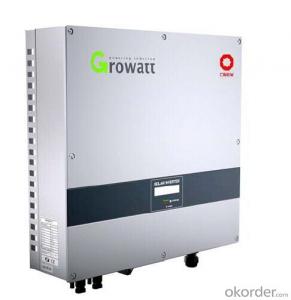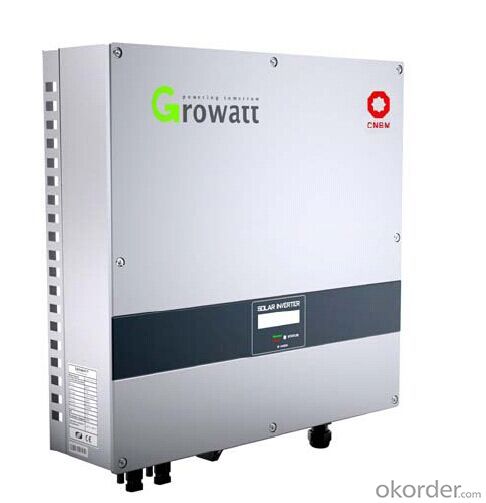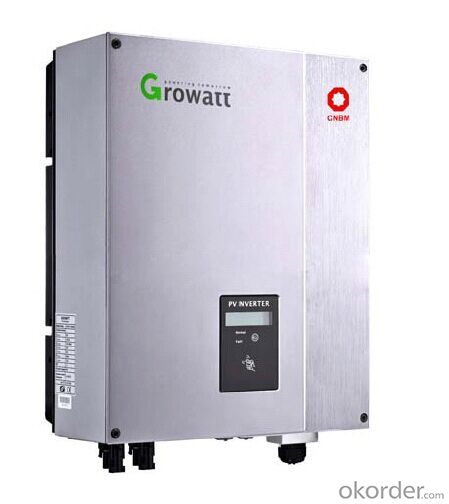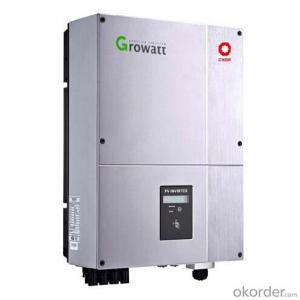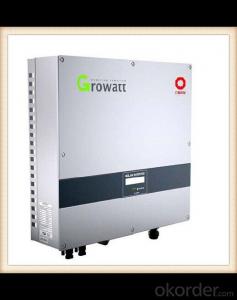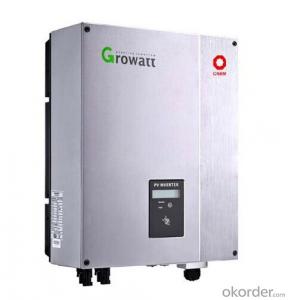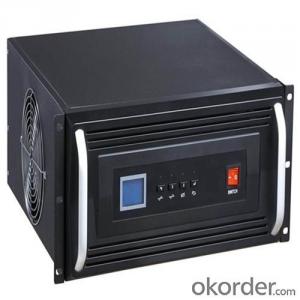6.5 Kw CNBM-1000TL On-Grid Inverter with Energy Storage Hybrid Solar Inverter
- Loading Port:
- China main port
- Payment Terms:
- TT OR LC
- Min Order Qty:
- 1000 watt
- Supply Capability:
- 100000 watt/month
OKorder Service Pledge
OKorder Financial Service
You Might Also Like
Introduction
CNBM-1000TL/1500TL/2000TL/3000TL/4000TL/4400TL/5000TL
Pure sine wave output
Microprocessor controlled to guarantee stable charging system
Multiple operations: Grid tie, Off grid, and grid tie with backup
Built-in MPPT solar charger
LCD display panel for comprehensive information
Multiple communication
Green substitution for generators
User adjustable charging current up to 25A
Maximum efficiency of 97.9% and wide
input voltage range
Wide MPPT voltage
Internal DC switch
Transformerless GT topology
Compact design
MTL – String
Multi-MPPT
Certificate: CE, VDE 0126-1-1,
DK5940, G83/1-1, G59/2, RD1663,
EN50438, VDE-AR-N4105, CEI-021,
IEC-62109, ENEL-Guide, UL1741,
UL1998, IEEE1547, CSA
Warranty: 5/10 years
Features
Maximum efficiency of 96.9% and wide input voltage range
Internal DC switch
MTL-String
Bluetooth/RF technology /wifi
Transformerless GT topology
5 years warranty(10years as optional)
Images
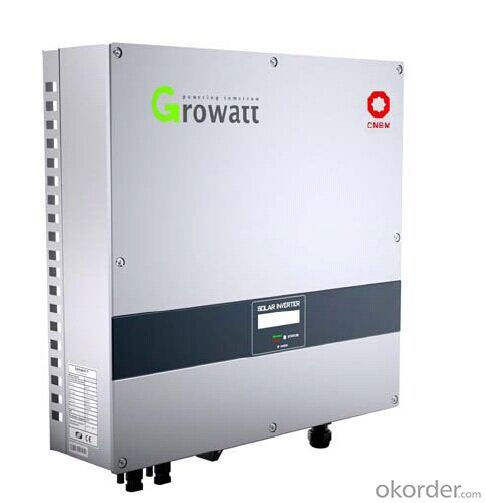
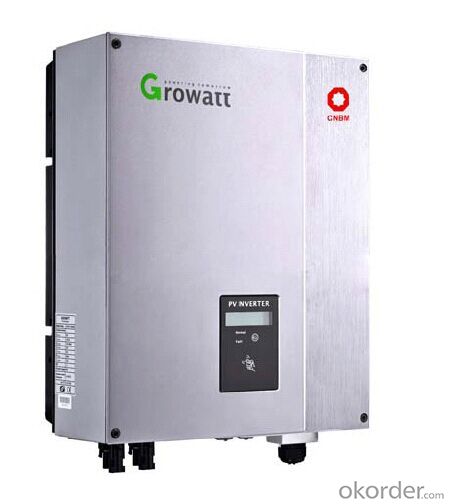

Sepecification

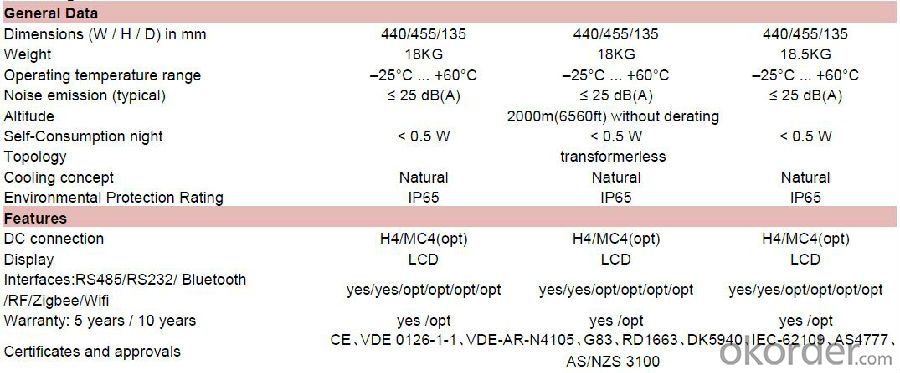
FAQ
Q1: How to choose a right inverter?
A1:Tell us your demand, then our sales will recommend a suitable inverter to you.
Q2: What's the different between inverter and solar inverter?
A2: Inverter is only accept AC input, but solar inverter not only accept AC input but also can connect with solar panel to accept PV input, it more save power.
Q3: How about the delivery time?
A3: 7 days for sample; 25 days for bulk order.
Q4: What is the warranty of inverter?
A4: 5/10 years warranty on CNBM-Solar product.
Q5: How to solve the technical problem?
A5: 24 hours after-service consultancy just for you and to make your problem to solve easily.
- Q: Can a solar inverter be used with different types of grounding configurations?
- Yes, a solar inverter can be used with different types of grounding configurations. However, it is important to ensure that the grounding configuration of the inverter is compatible with the specific electrical system it is being connected to. It is recommended to consult the manufacturer's guidelines and local electrical codes to determine the appropriate grounding configuration for safe and efficient operation.
- Q: How does a solar inverter handle voltage regulation during fault conditions?
- During fault conditions, a solar inverter typically handles voltage regulation through various protective and control mechanisms. It may employ techniques such as voltage regulation algorithms, fast response times, and fault detection systems. These measures help the inverter to rapidly detect and respond to fault conditions by adjusting its output voltage to maintain stability within safe limits. Additionally, some inverters may also incorporate features like overvoltage protection, under-voltage protection, and anti-islanding functionality to further ensure safe and reliable operation during fault conditions.
- Q: What is the difference between low voltage grid connection and medium voltage grid connection?
- The difference is that the current at low voltage and the grid is large, the current is small when the voltage is small, followed by the low voltage crossing parameter setting problem (such as PV inverter integrated with inverter and low voltage crossing function, not all photovoltaic inverter
- Q: What is the maximum power output of a residential solar inverter?
- The maximum power output of a residential solar inverter typically ranges from 1 kilowatt (kW) to 10 kW, depending on the specific model and capacity of the system.
- Q: How is the output voltage and frequency of a solar inverter regulated?
- The output voltage and frequency of a solar inverter are regulated through a combination of control algorithms and power electronics. These control algorithms constantly monitor and adjust the voltage and frequency based on the energy generated by the solar panels and the power requirements of the connected load. The power electronics, such as voltage regulators and frequency converters, ensure that the output voltage and frequency remain within the desired range. This regulation is crucial to provide stable and consistent power to the electrical grid or the connected devices.
- Q: How does a solar inverter handle shading or partial panel obstructions?
- A solar inverter handles shading or partial panel obstructions by utilizing maximum power point tracking (MPPT) technology. This technology allows the inverter to constantly monitor each individual solar panel's output and adjust the voltage and current to maximize power production. If shading or obstructions occur on one or more panels, the inverter can dynamically optimize the output of the unshaded panels, ensuring maximum efficiency and power generation despite the partial loss of sunlight.
- Q: Can a solar inverter be used with solar-powered remote sensing systems?
- Yes, a solar inverter can be used with solar-powered remote sensing systems. A solar inverter is responsible for converting the direct current (DC) generated by solar panels into alternating current (AC) that can be used to power various devices and systems. In the case of solar-powered remote sensing systems, the solar inverter would be an essential component in converting the DC power from the solar panels into the required AC power to operate the remote sensing equipment.
- Q: What are the typical efficiency ranges for different types of solar inverters?
- The typical efficiency ranges for different types of solar inverters vary depending on the specific technology and design. However, in general, string inverters have an efficiency range of around 95% to 98%, while microinverters tend to have an efficiency range of about 96% to 99%. On the other hand, central inverters have a wider efficiency range, typically ranging from 95% to 99%. It's important to note that these efficiency ranges can also be influenced by factors such as temperature, load, and design variations among manufacturers.
- Q: Can a solar inverter be used with a portable solar panel system?
- Yes, a solar inverter can be used with a portable solar panel system. A solar inverter is responsible for converting the direct current (DC) produced by the solar panels into usable alternating current (AC) electricity. Whether it is a portable or stationary solar panel system, a solar inverter is necessary to convert the DC power into AC power that can be used to power various devices and appliances.
- Q: Can a solar inverter be used with a solar-powered data center?
- Yes, a solar inverter can be used with a solar-powered data center. A solar inverter is an essential component that converts the direct current (DC) generated by solar panels into usable alternating current (AC) electricity for powering electrical devices and systems, including data centers. By using a solar inverter, a solar-powered data center can efficiently utilize the renewable energy generated by solar panels to meet its power requirements.
Send your message to us
6.5 Kw CNBM-1000TL On-Grid Inverter with Energy Storage Hybrid Solar Inverter
- Loading Port:
- China main port
- Payment Terms:
- TT OR LC
- Min Order Qty:
- 1000 watt
- Supply Capability:
- 100000 watt/month
OKorder Service Pledge
OKorder Financial Service
Similar products
Hot products
Hot Searches
Related keywords
